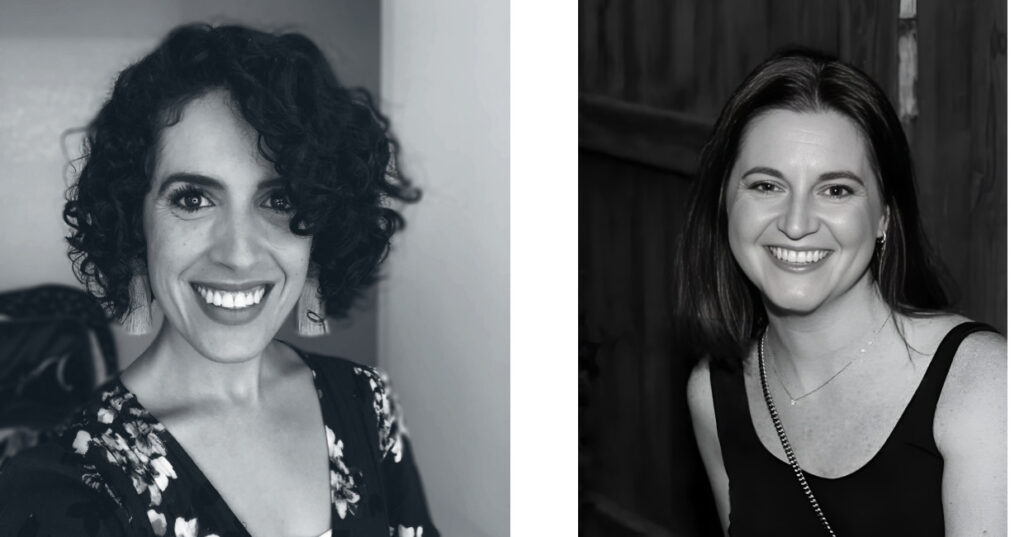For Pixel Design Collaborative co-founders, Kendal Rogers and Maria Gosset, collaboration and narratives are the key to creating successful luxury spaces. They told Vicky Doe about their aim to create unique spaces whilst maintaining authenticity in design.
Pixel Design Collaborative co-founders Maria Gossett and Kendal Rogers are a passionate team invested in creating narrative-driven designs led by connections to people, collaborations, and environments.
Having both worked and trained within the hospitality interior design market for their whole careers, they met whilst working in the industry and quickly realised that they shared a distinct vision for the type of design they wanted to be part of and how they wanted to partner with clients and collaborators. And so Pixel Design Collaborative was born.
The company didn’t have the easiest start, having launched in 2019 they were then faced with the pandemic as an infant company. Kendal explained: “The first chapter of Pixel was a challenge – we were a year old when Covid happened, and at that point, we were just Kendal and Maria – learning the ropes and doing everything ourselves. It was hard, but it really set us up for a lot of the success that followed.
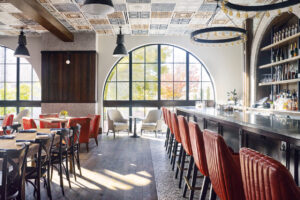
“We hired our first employee a month before the world shut down but we were really fortunate in the types of projects that we had on the docket. We had some hospitality projects that was far enough along and enough of a passion project for the owners that there was no delay. We had also just started a relationship with a previous client of Maria’s so in that time we grew from ‘Kendal and Maria’ to having six or seven in the team.”
That smaller size of firm is what Kendal refers to as ‘the sweet spot’ – they make a conscious decision to direct their project loads and the types of projects they work on to ensure the studio could be comfortable in its footing and become a ‘well-oiled machine’.
Maria agreed, explaining that by staying smaller, they feel that they can maintain creative control: “We wanted to still stay involved in a lot of the design and make sure that the team can all work together. As we approach every design challenge that comes our way, we make sure that we can give it the attention that it deserves and the time that it needs. It’s a simultaneous conscious effort of making sure that we’re the correct size, and that we’re taking on the correct number of projects.”
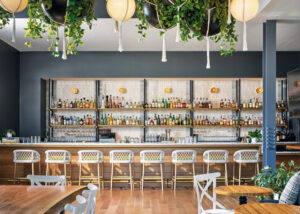
As the company has grown over time, the importance of collaboration became more and more evident. Maria explained: “Our name is Pixel Design Collaborative and that was very important to us from the beginning – collaboration is what we want to bring to every project. There is no part of a project that happens in isolation, we’re all working together. There always needs to be a cohesive approach with clients and with other industry partners and we find that the more open we are to communicating, crossing boundaries, and making sure we’re all talking and staying involved and active in the process, the better it is. Our Haiku for the company is ‘every little square helps make up the whole image, every pixel counts’. And it’s an idea that we’re one square, but everything must come and fall into place to make the image come together.”
I asked the team about their vision of luxury hospitality design – what are the common threads that they are seeing come through from clients and partners? Kendal said: “Design wise, we’re working to create spaces that immediately have that luxury, boutique, really comfortable feeling as soon as you walk in. Consistently, we are seeing more authentic materials in finishes of furniture and all the things that surround you. Authentic materials, natural materials really appeal to all of your senses, it dictates the way the space sounds and smells, every part of it has a major impact on how you’re experiencing that space.
“The second thing that we really try to focus on is the way spaces are lit – the lighting has such a major impact on guests’ experience in the space.”
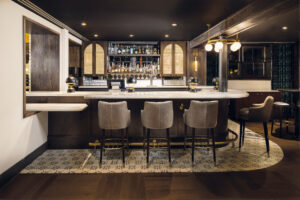
Maria added that touch points are also key to consider, and that the strength of narrative can be the key to success: “With interior design, you interact with and engage with it all and those touch points being authentic and warm is a huge part of it. Another thing that we find our clients are asking for is a narrative. We start every single project with a tonne of research and end up, in a lot of cases, actually writing a little story of the design and how it’s going to evolve. Once we have that narrative, it gives everyone an energy to tie into, and once you get buy in, then it’s easier to move the process forward.”
I was keen to find out how that definition of luxury has changed and if the Pixel team have seen a change in the mindset of clients and guests in what they are asking for. Maria was clear in her response – there has been a shift over time and experiences are now a key consideration in design: “I do think that luxury and how we define it has changed. Previously, [luxury hotels had] a certain look or feel or luxury material, with everything covered in stone and brass and rich deep woods, but now it’s more of a cohesive feeling. I think people are wanting hospitality to feel comfortable, to feel almost residential, to feel soft. We’ve stopped focusing on the overall ‘Wow’ moment and homed in a little bit more on the experiences of the space and how you engage with those spaces. Modern luxury sees softer, plusher furniture and it’s about going into a space and feeling immediately more comfortable.”
Kendal added: “I think I think the overall experience, including the space that you’re in and the service that you receive, must come together to create that luxury experience. There’s a lot of ideas about what luxury used to be that are ubiquitous now, so luxury properties have had to pivot and look at the entire experience as a whole and stop focusing on the obvious and what is new and trendy because those things no longer feel like an exclusive experience.”
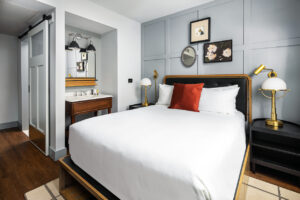 I was keen to find out how this new definition of luxury has made its way into some of the designs Pixel have created. We talked about The Restoration Hotel, Asheville which took much of its design inspiration from its location. Maria explained that the aim was to create something different in an area that already offers a lot of hotel options and experiences: “The challenge from the client was to create something that stood out and felt authentic to Asheville. We wanted it to be comfortable yet beautiful. The space is an old bank building and had amazing arched windows. We looked at the famous Biltmore which is a historic mansion in the area and studied its designers and from there, the Restoration became a love letter to the craftspeople of Asheville in celebration of all they have created here.”
I was keen to find out how this new definition of luxury has made its way into some of the designs Pixel have created. We talked about The Restoration Hotel, Asheville which took much of its design inspiration from its location. Maria explained that the aim was to create something different in an area that already offers a lot of hotel options and experiences: “The challenge from the client was to create something that stood out and felt authentic to Asheville. We wanted it to be comfortable yet beautiful. The space is an old bank building and had amazing arched windows. We looked at the famous Biltmore which is a historic mansion in the area and studied its designers and from there, the Restoration became a love letter to the craftspeople of Asheville in celebration of all they have created here.”
Kendal explained that, as experiences are now so important in luxury design, it had to be reflected in this creation: “We ended up with a space where guests will want to have visited every F&B outlet – you haven’t fully experienced the full hotel until you’ve experienced all three because they are so unique and different, but at the same time they work cohesively together to make sense as one singular space.”
Another space which both designers have a deep fondness for is the Wylie Hotel in Atlanta. It was their first project after launching Pixel and Kendal describes it as ‘a product of love and commitment’. She explained: “We installed this design over Covid and so there were challenges coming from every direction but the end product is something I’m incredibly proud of. It’s 10 minutes away from our office and I love to tell people in the area that we designed that hotel, and that was the first one to come out of Pixel – I love hearing people’s reactions.”
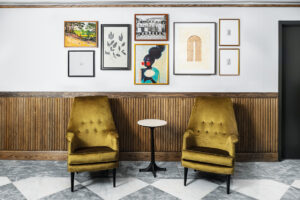
So what is coming up for the firm? Which projects have they got in the pipeline that will see them showcasing their knowledge of modern luxury design? Kendal told me: “We have a couple happening, but the one we’re most excited about is a local one in quite an isolated community. There are hiking trails, tiny homes, beautiful large brick homes, restaurants, a general store, a school and a spa within the community and we’re working on the first official hotel for the area. It is a large, extensive public space, with 110 guest rooms and not only is it going to be incredibly exciting for the community, but also for everyone locally and possibly beyond. It is a really great opportunity to put some very thoughtful, authentic design into place.”
That seems to be the direction Pixel is heading in going forward – creating meaningful designs in unique spaces and delivering guest experiences fitting for the location of the property. Maria explained that future aims for the firm involve allowing the team to grow: “We are helping each other to continue to grow and find our expertise within our market. We’re very much about allowing the team to find their passions, because we find if you’re doing what you love, there’s an energy that you bring into the room, and the projects really benefit from it. So the aim for our team is growing together, continuing to design together, and becoming the perfect power team that we all know we can be.”


